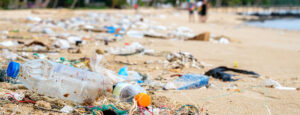A recent study has revealed a concerning fact: individuals with nanoplastics in their carotid artery tissue are twice as likely to experience a heart attack or stroke compared to those without any. Carotid arteries on either side of the neck carry blood to the brain and are susceptible to clogging due to fatty cholesterol plaques, known as arteriosclerosis. This is the first study to establish a direct link between plastic contamination and health risks, according to the author, Raffael Marfella. Although the initial data is alarming, it has yet to be confirmed by other studies since it is the first comprehensive study of its kind. However, the data convincingly highlights that the presence of plastics does indeed affect atherosclerosis patients.
Is exposure to nanoplastics a cardiovascular health risk?
Dr. Philip Landrigan, a professor of biology at Boston College and director of the Program for Global Public Health and Common Good, stated that finding nanoplastics in plaque tissue is a breakthrough discovery. However, we must still understand what other factors may contribute to patients’ adverse outcomes. In the first study, we have more questions than answers. Is exposure to plastics a cardiovascular health risk? What other tissues besides our cardiovascular system might be affected?
The dual nature of plastic
We all know the benefits plastics have provided us, from preserving foods to creating life-saving blood bags. Their use has benefited us in many ways. Still, their durability and resilience to decomposing have posed an environmental problem that we are just starting to mitigate through better technological advances and recycling programs. Nanoplastics are the most problematic due to their small size. At 1,000 times the width of a human hair, they can enter the bloodstream through the digestive system. Yet, these tiny particles have been found in bottled water. One liter can contain an average of 240,000 plastic particles from seven types of plastics, with 90% of them being nanoplastics.
The good news is that nanoplastics can be filtered through reverse osmosis. Please get in touch with us to get a free water analysis.


 Water Softener and RO Installations
Water Softener and RO Installations